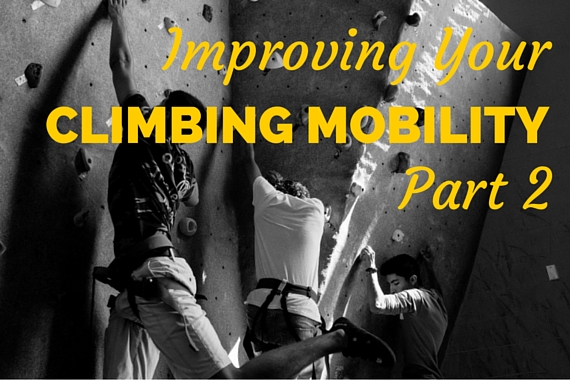We all need to improve mobility. Some of us do it consciously; actively seeking long lasting ways of keeping the body primed for action, while some of us do it without even noticing. For example, stretching your arms into the air when you wake in the morning is a war cry to the body to regain or improve its flagging mobility.
How you tackle and train mobility should be as important as your fingerboard session or your front lever ambitions. Mobility decreases with age and when you are sedentary, and with excessive activity, muscles also tighten and joints stiffen. If you do not have mobility and full range of motion when climbing, you are a chalk bag short of chalk!
It is engrained in us that we need to stretch. And in this day and age, with the knowledge and resources we have, there is no reason not to. Myofascial release, however, is still widely overlooked.
This generally comes down to 2 things:
- lack of knowledge
- and pain threshold.
Myofascia is the name given to the connective tissue layers that envelope and separate muscles. Restriction in these lines and layers of connective tissue is thought to be a major cause of muscle tightness, poor flexibility, and movement dysfunction. (Myers, 2001)
Experiment
If you pinch the t-shirt, tank, shirt, etc. that you are wearing and twist that piece of material between your fingers, you will notice that there are creases that run away. The connective tissue (myofascia, or fascia for short) acts in the same way.
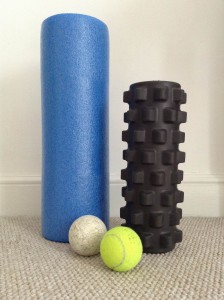 That fascia knot has creases that run away into the connective tissue, creating tightness. This creasing characteristic means that pain and lack of mobility in one area can be caused by a knot in another.
That fascia knot has creases that run away into the connective tissue, creating tightness. This creasing characteristic means that pain and lack of mobility in one area can be caused by a knot in another.
Releasing the tension built up in the fascia is part of what a good sports masseuse will do. This tension can be caused by everyday demands or rampant training/climbing regimes, and releasing it can be groundbreaking for your mobility.
Releasing fascia tension can be achieved by many mean; foam rolling being the most common. Foam rollers have been on the market for a while—they are cheap and very effective. Choosing the right roller to start with is important. The softer the roller the better, and over time you will find that a tougher roller is needed to reach those deep tight tissues.
Try this:
Using a foam roller
- Working one leg at a time, lay down sideways on the floor placing a roller under your thigh so that it rests on your IT band.
The IT band (iliotibial band) is a strong, thick band of fibrous tissue that runs along the outside of the leg. The IT band starts at the hip and runs along the outer thigh and attaches on the outside edge of the shin bone (tibia) just below the knee joint - Supporting your body by your forearm, slowly roll along the floor allowing the roller to move down your thigh, stopping and holding on any trigger points.
- Slowly rotate your body around so that the roller hits each facet of your thigh, then move to the hamstrings.
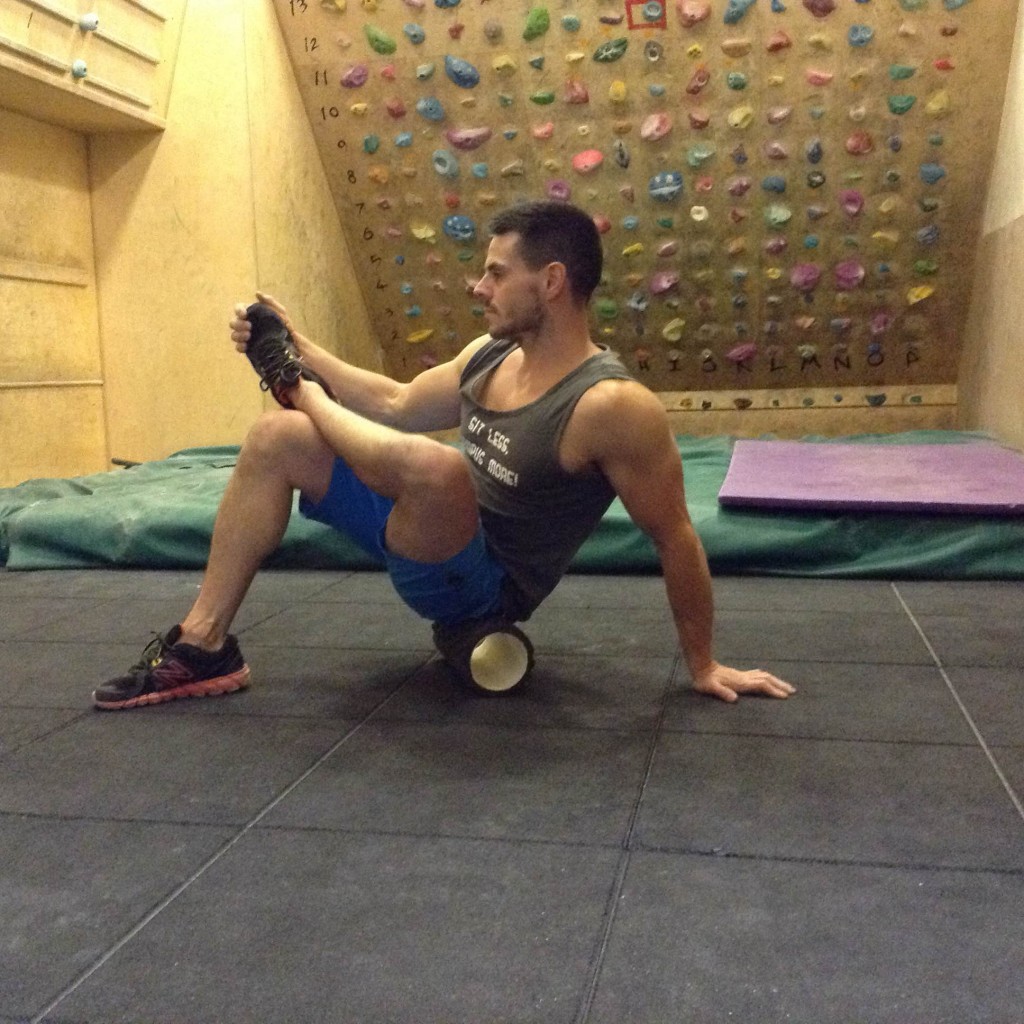
The roller can be used on the glutes by sitting with the chosen side on the roller, then raising the leg up and crossing over the opposite leg.
Using a tennis ball:
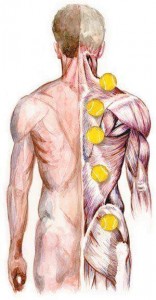 Take a tennis ball; place it between your spine and scapula (shoulder blade) and lean against a wall or on the floor.
Take a tennis ball; place it between your spine and scapula (shoulder blade) and lean against a wall or on the floor.- Slowly move your body so that the ball rolls up and down your back, and when you hit a trigger point, hold the ball there for 10 seconds until the tension and pain subsides.
A trigger point is a highly irritable localized spot of exquisite tenderness in a nodule in a palpable taut band of muscle tissue (Simons, Travell, & Simons, 1999)
A tennis ball can also be used for the glutes and calves.
Other topics related to myofascial release
Dealing with pain
I’m not going to lie; fascia release can be very painful, especially when you first try it I know many people who have disregarded rolling because of the pain, and all I can say is stick with it. After a few agonizing sessions, you will become addicted. The pain subsides as your muscles adapt and release the pressure.
When to roll/release
There is no strict rule on when to perform myofascial release, but for me personally, I like to roll after a training session. I also roll at home before bed, but there is a definite advantage to fascia release before a climb. It will loosen and warm the muscles up, giving you much-needed mobility.
A final experiment
Coping with tight hamstrings
- If you suffer from tight hamstrings, and no matter how much you try you cannot touch your toes, give this little trick a go:
- Remove your shoes and socks.
- Put a billiard or golf ball on the floor and place one of your feet on it.
- Slowly roll your foot up and down on the ball, applying an even pressure.
- Roll for two minutes. Remove your foot and try bending over to touch your toes. You should notice a vast improvement in your flexibility on the side that has just been rolled.
Fascia release is a very extensive subject and I have only given you the basics in this article. If you can take the time and get over the initial pain, then you will see a big improvement in your mobility—resulting in safer, harder ascents.
Train hard, Climb hard!
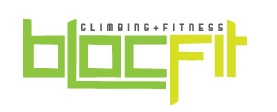
Dave Culver is the personal trainer behind Blocfit—helping climbers improve in strength, power, and endurance. To keep up with Dave, follow Blocfit on Facebook and Twitter.
Want more climbing content? Get our awesome climbing newsletter, delivered weekly.
Explore more
- This week’s best rock climbing gear deals
- Our 30+ most popular articles ever
- 6 Best Training Recovery Tools for Climbing
- Strength or Power? Improving Your Climbing with Plyometrics Training
- 7 Common Sense Ways to Prevent Injuries This Climbing Season
- Climber Spotlight: Beth Rodden on Redpointing Tips, Training, and Nutrition
- VIDEO: Brutal Garage Climbing training with Loic Timmermans
- Get daily updates by Liking us on Facebook
- Free rock climbing PDFs on technique, training, knots, and more

